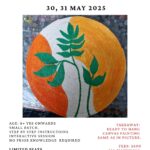A descriptive paragraph is a detailed piece of writing that helps readers visualize a person, place, object, or experience through sensory details. Students learn to create vivid mental pictures using the five senses: sight, sound, smell, taste, and touch.
Key elements of descriptive paragraph writing:
- Main Topic Sentence: Begin with a sentence that introduces what you’re describing.
Example: “My grandmother’s garden is a magical place filled with colorful flowers and buzzing bees.”
- Sensory Details: Include specific details that appeal to the senses:
– What you see (colors, shapes, sizes)
– What you hear (sounds, noises)
– What you smell (fragrances, odors)
– What you feel (textures, temperature)
– What you taste (if applicable)
- Proper Order: Organize details in a logical way, like:
– Left to right
– Top to bottom
– Near to far
– General to specific
- Descriptive Language:
– Use adjectives (beautiful, massive, delicate)
– Include similes (as soft as silk)
– Add metaphors (the tree was an umbrella)
Here are some sample descriptive paragraph:
The Banyan Tree
The old banyan tree stands majestically in our school playground. Its thick, twisted trunk rises from the ground like a giant’s legs. Long aerial roots hang down like brown ropes, creating natural swings for playful students. The tree’s massive canopy spreads out like a green umbrella, providing cool shade during hot afternoons. Birds chirp melodiously from their nests hidden among its dense leaves, while squirrels scurry up and down its rough bark. During spring, tiny red flowers carpet the ground beneath it, making it look like nature’s own rangoli.
Describing a Festival (Diwali)
Our home transforms completely during Diwali evening. Rows of earthen diyas flicker like tiny golden stars along the balcony railing, filling the air with the gentle scent of mustard oil. Colorful rangoli patterns decorate our doorstep, their vibrant powders creating intricate designs of peacocks and flowers. The sweet aroma of freshly made gulab jamuns and kaju barfi wafts from the kitchen, making everyone’s mouth water. Children run around in their new clothes, their excited laughter mixing with the occasional burst of crackers. The whole atmosphere sparkles with lights and happiness, making it truly the festival of lights.
Describing a Rainy Day
The first monsoon shower brings our dusty neighborhood to life. Dark clouds roll across the sky like waves of gray cotton, while cool winds make the neem trees dance wildly. Large raindrops drum against tin roofs, creating a rhythmic symphony that echoes through the streets. Small paper boats float in the growing puddles, guided by excited children in colorful raincoats and gumboots. The petrichor – that unique smell of rain on dry earth – fills every breath with freshness. Peacocks in the nearby park spread their feathers and dance, celebrating nature’s shower with their loud calls.
Describing Your Favorite Street Food Stall
Sharma Uncle’s samosa stall is the busiest corner of our market. His small cart, decorated with shiny steel containers and a glass case, sits under a bright blue umbrella. The hot oil bubbles and sizzles as he drops perfectly triangular samosas into it, their golden-brown crust turning crispy by the minute. The spicy aroma of his special green chutney mixed with the sweetness of tamarind sauce makes everyone’s stomach rumble. Students, office workers, and shopkeepers crowd around his stall, drawn by both the delicious smells and his friendly smile. Every evening, the clinking of steel plates and satisfied murmurs of customers create a cheerful atmosphere around his little food paradise.
Describing Your School Library
Our school library is a peaceful haven of knowledge. Tall wooden shelves stretch from floor to ceiling, filled with books of every size and color. Sunlight streams through large windows, creating warm reading spots where students curl up with their favorite stories. The gentle whir of ceiling fans mingles with the soft rustle of turning pages and occasional whispers. The distinct smell of old books mixed with polish from the wooden tables creates a unique library fragrance. Our librarian, Mrs. Kumar, moves silently between the aisles like a guardian angel, her gray hair always neatly tied in a bun, helping students find their next adventure in the world of books.
Tips for writing a good descriptive paragraph:
- Observe carefully before writing
- Make notes about different sensory details
- Use specific rather than general words
- Include figurative language
- Stay focused on one main topic
- End with a concluding sentence that ties everything together

















